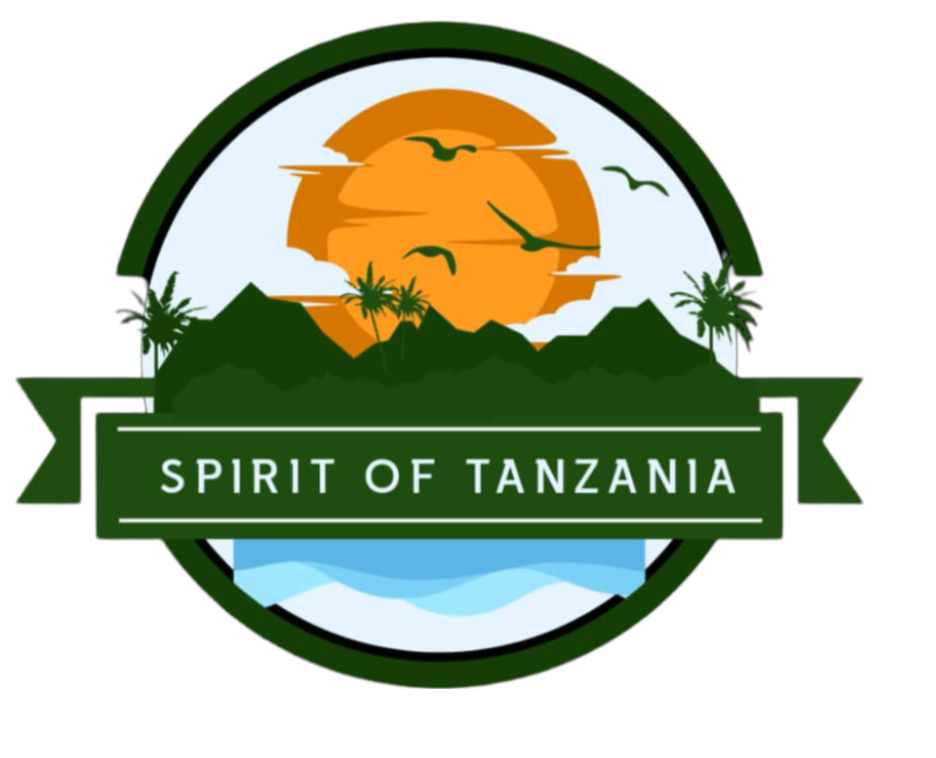5 DAYS MOUNT KILIMANJARO MARANGU ROUTE
The Marangu Route, known as the “Coca-Cola” route, is one of the most popular and accessible paths to the summit of Mount Kilimanjaro. This 5-day trek offers a unique blend of adventure and comfort, making it ideal for first-time climbers.
The journey begins in the lush rainforest at the base of the mountain, where trekkers can marvel at the diverse flora and fauna, including towering eucalyptus trees, colorful birds, and playful monkeys. As you ascend, the landscape transforms into heath and moorland, providing breathtaking views of the surrounding valleys and the impressive Mawenzi peak.
One of the highlights of the Marangu Route is the series of comfortable mountain huts where trekkers stay each night. These huts offer a warm and sheltered resting place, complete with beds and communal dining areas, enhancing the overall trekking experience.
The trek continues through the stark beauty of the alpine desert, where the terrain becomes more rugged and challenging. Despite the demanding conditions, the sense of achievement and the panoramic views of the summit make every step worthwhile.
Reaching the summit of Mount Kilimanjaro, Uhuru Peak, is an unforgettable experience. From the top, trekkers are rewarded with a stunning sunrise and sweeping views of the African landscape, stretching out beneath them.
Throughout the journey, the Marangu Route provides a rich and varied trekking experience, combining the thrill of climbing Africa’s highest peak with the comfort of well-maintained huts and the beauty of Kilimanjaro’s diverse ecosystems.
DAY 1: MARANGU GATE – MANDARA HUTS: 7K /MI | 4-5 HRS | RAINFOREST
Elevation: 1830m/6000ft to 2740m/9000ft
Departing from Arusha 3-hour drive will take you through the Village of Marangu to the Kilimanjaro National Park Gate. We will patiently wait for our permits to be issued while watching the hustle and bustle of operations as many crews prepare for the journey ahead Enjoy the beautiful rainforest scenery and windy trails while your guide tells you about the local flora and fauna and natural wildlife. At these lower elevations, the trail can be muddy and quite slippery. We highly recommend gaiters and trekking poles here.
DAY 2: MANDARA HUTS – HOROMBO HUTS: 11KM/3MI | 6-8HRS | MOORELAND
Elevation: 2740m/9000ft to 3690m/12,100ft
After a good nights sleep and a hearty breakfast, we emerge from the rain forest and continue on an ascending path, through heathland, looking for giant lobelias and groundsels. Continue up into open moorlands where small shrubs are the main vegetation. Stop halfway for lunch, to enjoy amazing views of Mawenzi. Arrive at the Horombo Huts late afternoon beneath the spectacular Kibo Summit viewpoint. Temperatures begin to drop.
DAY 3: HOROMBO HUTS- KIBO HUTS: 10KM/6MI | 6-8HRS | SEMI-DESERT
Elevation: 3690m/12,100ft to 4695m/15,400ft
After breakfast, we continue on through the dwindling heathland that blends into a moonscape as you enter the sweeping saddle connecting Mawenzi and Kibo. Here while we stop for lunch, and later when you cross this surprisingly large saddle, you can examine the summit climb up Kibo that you will be starting in just a few hours.
DAY 4: KIBO HUTS – SUMMIT: 4KM /2.5 MI UP | 5-7HRS | – HOROMBO HUTS: 14KM /9MI DOWN | 5-6HRS | GLACIERS, SNOW CAPPED SUMMIT
Elevation: 4695m/15,400ft to 5895m/19,340ft
Descent to 3690m/12,100ft
Excitement is building as morning comes with an early start between midnight and 2 a.m. This is the most mentally and physically challenging portion of the trek.
We continue our way to the summit in a switchback formation through trying to stay warm and focused on the amazing sense of accomplishment that lies ahead. With a switchback motion, we ascend through heavy scree and possibly snow towards Gillman’s Point on the crater rim. You will be rewarded with the most magnificent sunrise during your short rest here. Faster hikers may view the sunrise from the summit. From here on your remaining 1 hour ascent to Uhuru Peak, you are likely to encounter snow all the way.
Congratulations, one step at a time you have now reached Uhuru Peak the highest point on Mount Kilimanjaro and the entire continent of Africa!
After photos, celebrations and maybe a few tears of joy we take a few moments to enjoy this incredible accomplishment. We begin our steep descent down to Mweka Camp, stopping at Barafu for lunch and a very brief rest. We strongly recommend gaiters and trekking poles for uncooperative loose gravel and volcano ash terrain. Well-deserved rest awaits you to enjoy your last evening on the mountain. Overnight Mweka Camp.
DAY 5: HOROMBO HUTS – MARANGU GATE – ARUSHA: 18KM/11MI |6-7HRS | RAINFOREST
Elevation: 3690m/12,100 to 1830m/6000ft
After breakfast and a heartfelt ceremony of appreciation and team bonding with your crew, it’s time to say goodbye. We continue the descent down stopping at the Mandara Huts for lunch. Remember to tip your guides, cooks, and porters, since you will be leaving them here. You return back to the Marangu Park Gate and receive your summit certificates. As the weather is drastically warmer, the terrain is wet, muddy and steep and we highly recommend Gaiters and trekking poles. From the gate, a vehicle will meet you to drive you back to your hotel in Arusha (about 45 minutes). Enjoy a long overdue hot shower, dinner, and celebrations‼
Overnight at Tulia Boutique hotel B&B. Before being transferred to your journey home, safari or a relaxing trip to Zanzibar.
INCLUDED IN TREKKING PACKAGE:
Kilimanjaro trekking according to the itinerary
Professional, English-speaking Wilderness First Responder & CPR certified Guide
Proper Ration of Mountain crew (Cook & Porters)
Pre and Post accommodations (2 nights Bed and Breakfast)
Airport Transfers
Meals according to the itinerary
Drinking water and Full Board Meals
All National Park & Hut Fees, Crew Permits and VAT
Fair and Sustainable Salary Crew Wages
Gate Transfers
Complimentary Oxygen Cylinder
Credit Card Transfer Fees
EXCLUDED FROM TREKKING PACKAGE:
Flights
Visa fees
Travel or Medical Insurance is required and you should ask for Recommendation
Gamow Bag
Medication
Tips for porters and mountain crew is recommended $450 per person
Personal spending money for souvenirs etc.
Energy food & beverages, alcoholic and soft drinks
Personal hire gear such as trekking poles, sleeping bags, etc.
Additional lodge nights if early descent from the mountain
How to Book
- Click Button Below
- Fill the Form .
- Send us the form.
About this Tour.
- Best price guarantee
- No charges on request
- Over 1000 Tourists Served by us
- Response within 24 hours
Lock this Trip Today.
- 30% Booking Deposit
- All Departure are Guranteed
- Chat with Our Experts Live
- Value for Money Guarantee
Why Travel With Us.
- Expert Local Knowledge
- Luxury and Comfort
- Personalized Itineraries
- Your Safety First
Frequently Asked Questions about KILIMANJARO TREKKING
The best time to climb Mount Kilimanjaro is during the dry seasons, from January to mid-March and from June to October. These periods offer the most favorable weather conditions and clearer views.
Climbing Mount Kilimanjaro is challenging due to the high altitude and the physical demands of the trek. However, with proper preparation, acclimatization, and determination, many people of varying fitness levels successfully reach the summit.
No, Mount Kilimanjaro is a non-technical climb, which means you don’t need specialized climbing equipment or technical skills. It is essentially a high-altitude trek.
The duration of the climb depends on the chosen route. The most popular routes, such as Marangu and Machame, typically take 5 to 7 days to complete.
There are several routes to the summit, each offering unique experiences. Popular routes include Marangu (Coca-Cola route), Machame (Whiskey route), Lemosho, Rongai, and Northern Circuit.
Success rates vary by route and climber preparation. Generally, longer routes with better acclimatization opportunities have higher success rates. On average, the summit success rate ranges from 60% to 90%.
Essential items include layered clothing for varying temperatures, sturdy hiking boots, a warm sleeping bag, a headlamp, a first aid kit, and plenty of snacks. A detailed packing list is typically provided by tour operators.
Yes, Tanzanian regulations require all climbers to be accompanied by a registered guide. Guides, along with porters and cooks, ensure safety, provide support, and enhance the overall experience.
Acclimatization is key to preventing altitude sickness. Climbing slowly, staying hydrated, and choosing longer routes that allow more time for acclimatization can help. Some climbers also use medications like Diamox to mitigate symptoms.
Accommodation varies by route. On the Marangu route, trekkers stay in huts with basic facilities. Other routes offer camping, with tents set up by porters.
Meals are prepared by cooks and typically include a variety of nutritious foods to keep climbers energized. Common meals include soups, pasta, rice, vegetables, and fruits.
If a climber cannot continue due to illness or exhaustion, guides will assist in descending to a lower altitude or arrange for evacuation if necessary. Safety is the top priority.
Ready for an unforgettable adventure?
Contact us now to book your Kilimanjaro Trekking!




